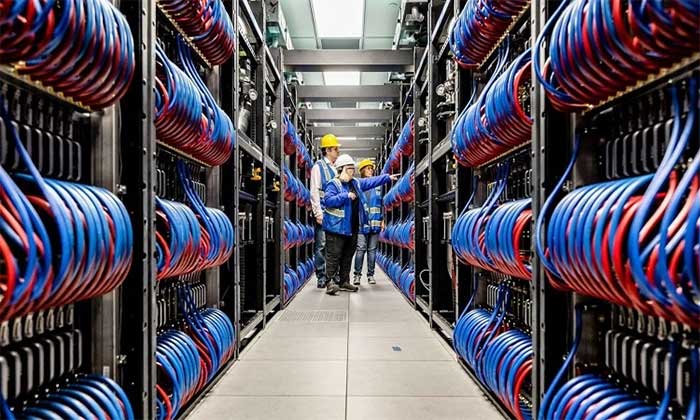The U.S. Supercomputer Aurora Successfully Assembled and Set to Operate by Year-End.
The Aurora supercomputer at Argonne National Laboratory. (Video: ANL).
The installation of the 10,624th computing blade, the final blade of the Aurora supercomputer, marks a significant milestone for the exascale supercomputer (exascale refers to the ability of a computer system to process at least one exaflop, or one quintillion calculations per second) at the Argonne National Laboratory, part of the U.S. Department of Energy (DOE). After years of planning and research, the system now includes all the hardware needed to make it one of the most powerful supercomputers in the world for scientific operations. Built by Intel and Hewlett Packard Enterprise (HPE), Aurora is capable of delivering over two exaflops (more than two quintillion calculations per second).
The Aurora fabrication team constructed the system in parts over 1.5 years, installing computing blades and other components transported to the Argonne Leadership Computing Facility (ALCF) from November 2021, according to Susan Coghlan, project director for Aurora at ALCF. “Although there is still much work to be done before deploying the system for the global scientific community, we are incredibly excited to have installed the final hardware,” Coghlan shared.

Aurora can deliver computing capabilities of over two exaflops (more than two quintillion calculations per second).
As the “backbone” of the system, the computing blades of Aurora are rectangular blocks containing processors, memory, networking, and cooling technology. The machine’s computational power comes from Intel’s central processing units (CPUs) and graphics processing units (GPUs). Each computing blade is equipped with two Intel Xeon CPU Max Series processors and six Intel Data Center GPU Max Series processors.
Since each computing blade weighs nearly 32 kg, the fabrication team required a specialized machine to install them accurately in a vertical position on Aurora’s large refrigerator-sized racks. This supercomputer consists of a total of 166 racks, with each rack housing 64 computing blades. The racks are arranged in 8 rows, occupying an area equivalent to two professional basketball courts at the ALCF data center.
Before the system installation, Argonne had to undertake several significant facility upgrades, including creating additional space to accommodate the supercomputer, constructing mechanical rooms and equipment to enhance power and cooling capabilities. Now that the machine is complete, the research team from the Aurora Early Science program at ALCF and the DOE’s exascale computing project will begin scaling applications on the full system.


















































